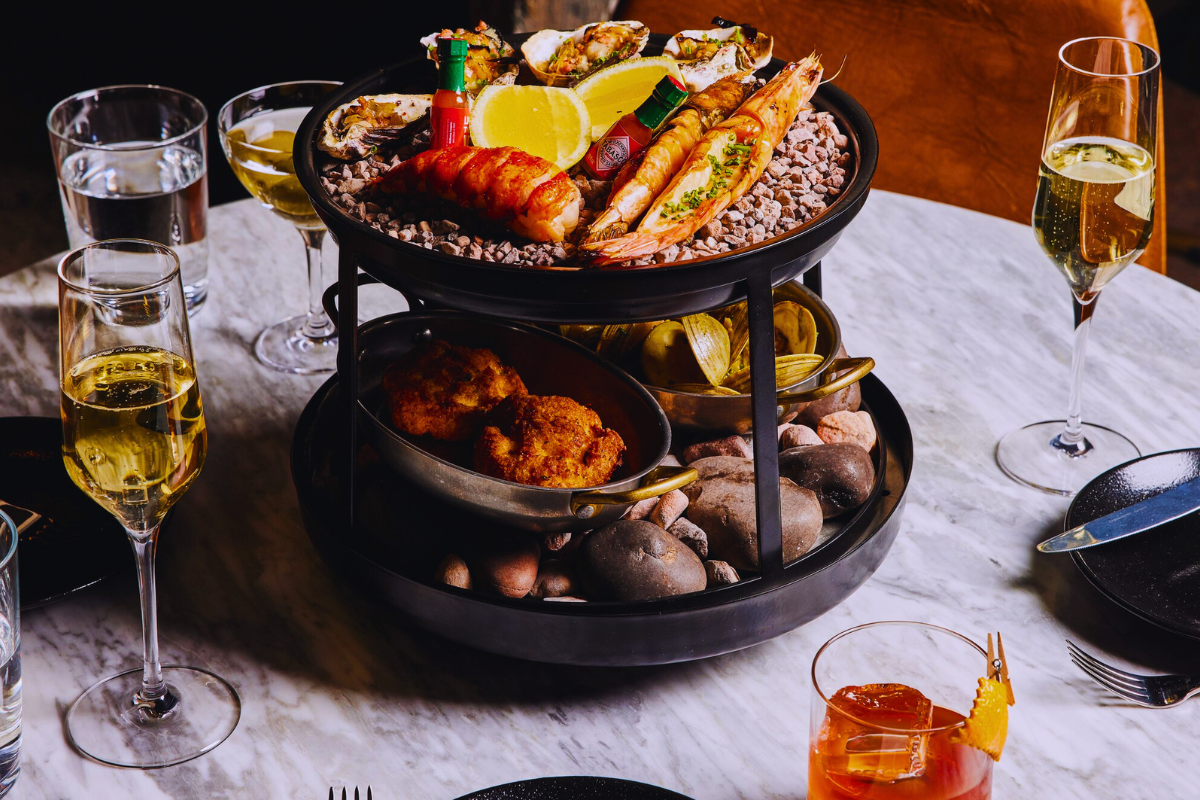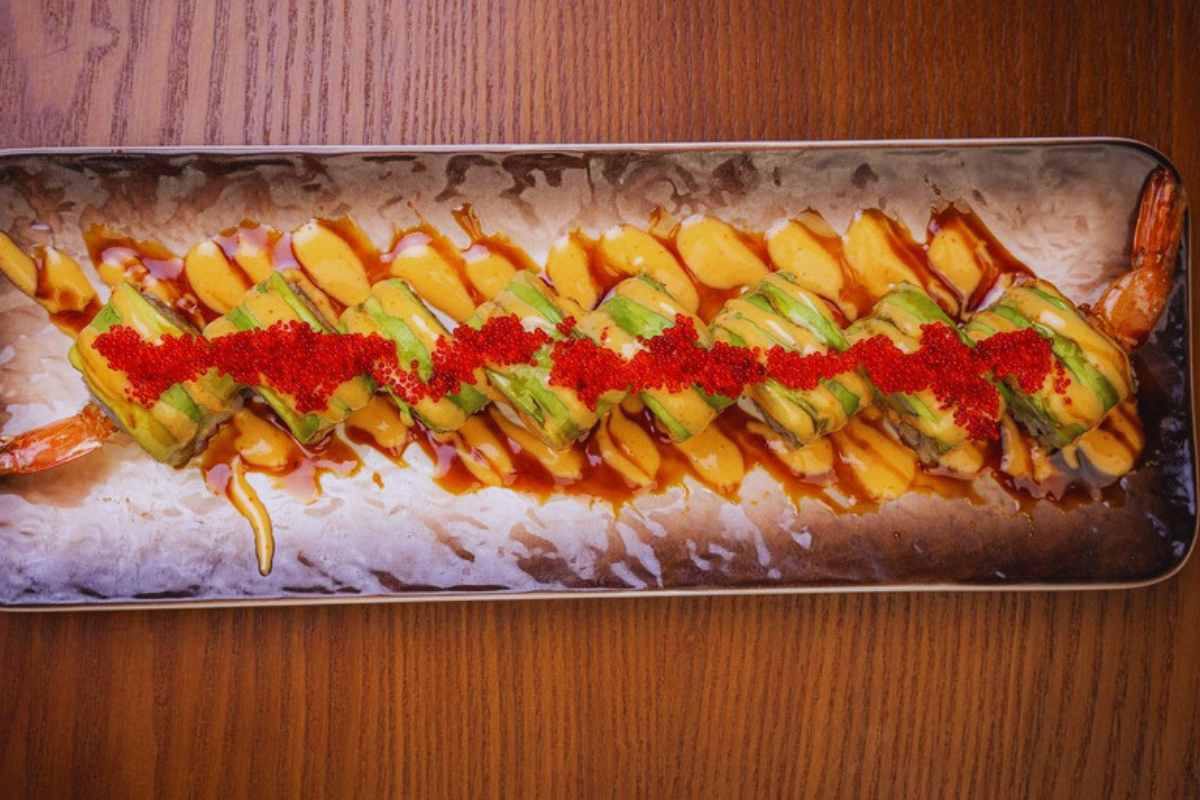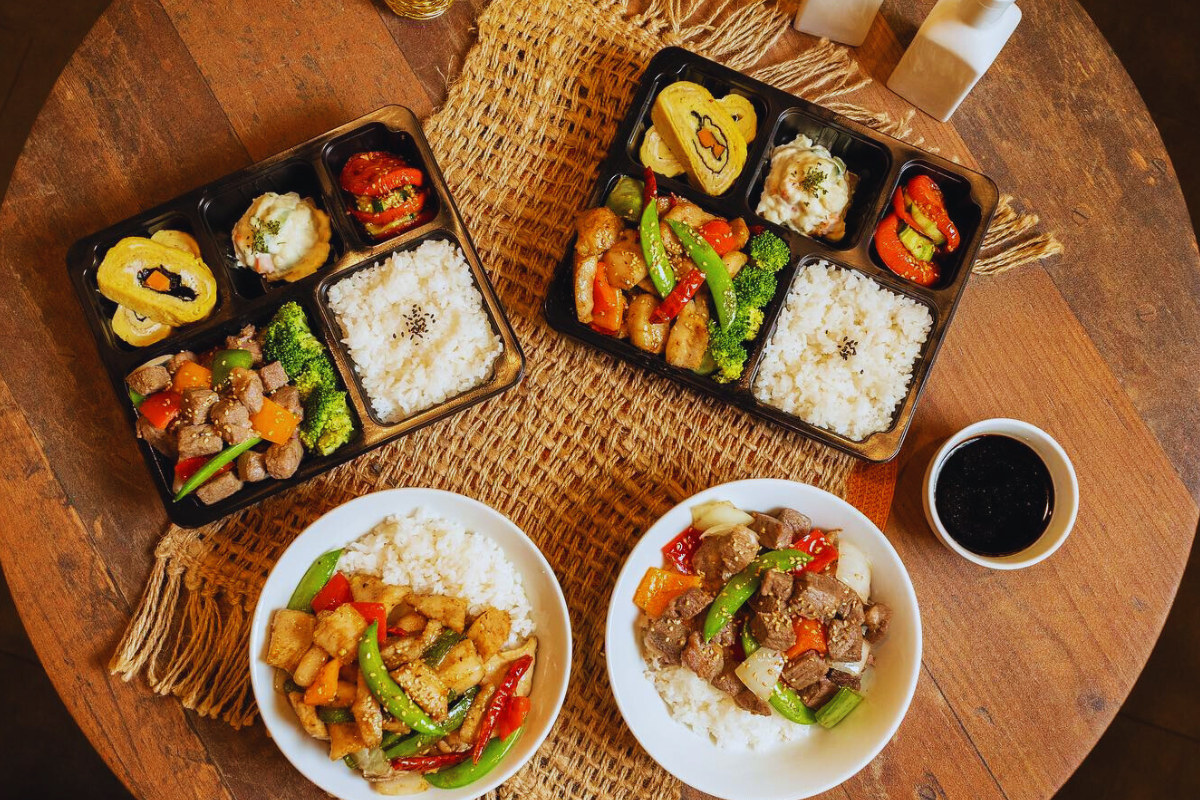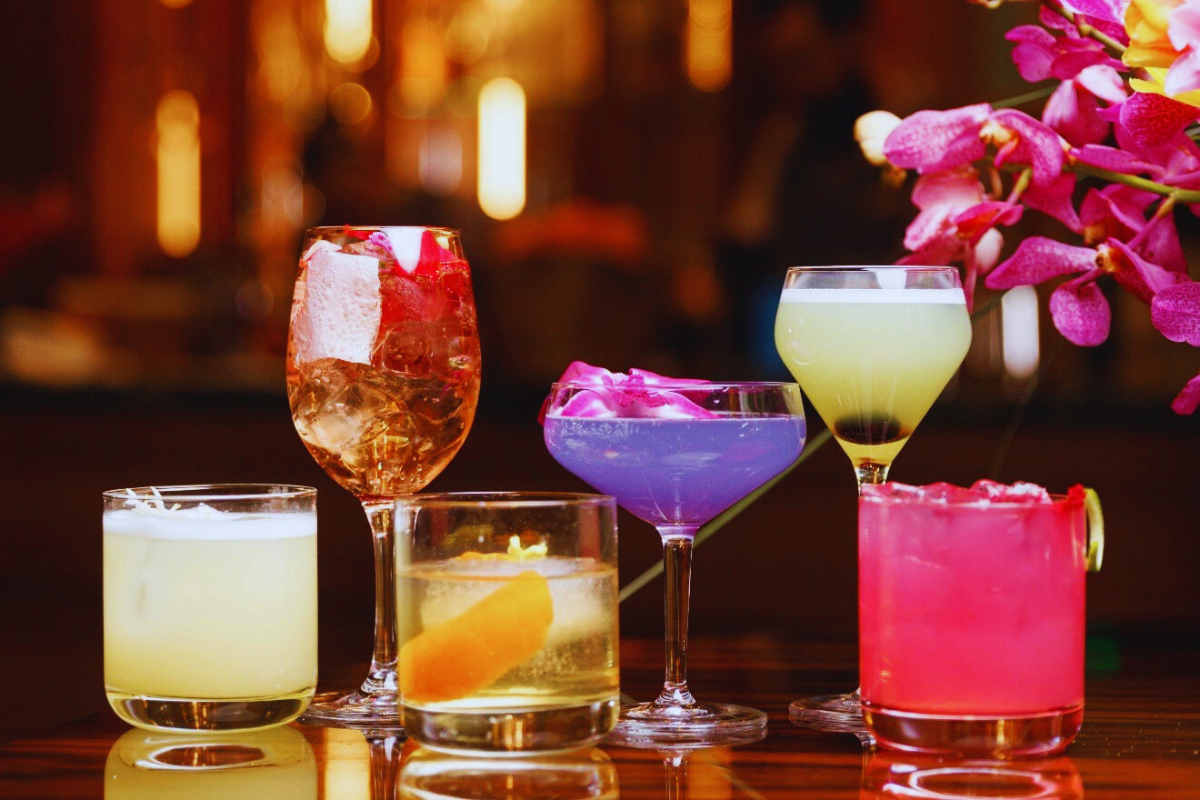There's this moment that happens at The French Spot—usually around 8:30 on a Saturday morning—when the smell of butter and caramelized sugar hits you so hard you actually stop mid-step on Main Street. It's not subtle. It's the kind of aroma that makes you understand why people plan entire road trips around pastries.
The French Spot is run by a French family with Lyon-bred culinary expertise, and once you taste their almond croissants, you'll understand why customers from Las Vegas and Salt Lake City make the drive down to this unassuming spot in Cedar City. One visitor put it simply: "The best Almond Croissant! The food, including the coffee, Almond croissants, macarons were all amazing! So yummy made with quality and so fresh!"
From Lyon's Michelin Kitchens to a Cedar City Sidewalk Café
Michael Attali, originally from Lyon—the culinary heart of France—is the driving force behind The French Spot. Trained under legendary chefs Paul Bocuse and Gaston LeNôtre, he mastered the art of flavor and technique through Michelin-starred kitchens in Paris and Geneva, and fine dining establishments in Dubai and New York.
Now here's the thing about Lyon: it's not just any French city. It's the gastronomic capital of France, where Paul Bocuse—the man they called the "pope of gastronomy"—built his empire. Bocuse held three Michelin stars for 55 consecutive years. To train under him wasn't just culinary school; it was like doing your residency with the best surgeon in the world.
And Gaston LeNôtre? He revolutionized French pastry in the 20th century, creating techniques that pâtissiers worldwide still use today. These weren't just teachers. They were legends who shaped how the entire world understands French cuisine.
So when Michael Attali decided to open a small café in Cedar City, Utah, he brought something most American bakeries can't replicate: muscle memory from thousands of hours in Europe's most demanding kitchens. The way he lamminates croissant dough, the exact temperature his butter needs to be, the precise moment to pull a tart from the oven—these aren't things you learn from YouTube videos. They're instincts developed under chefs who accepted nothing less than perfection.
The French Spot is a true family enterprise, their way of bringing a little corner of French culture to the community. Michael's wife teaches French language, and their adult children help manage the café, creating that rare thing: a restaurant where everyone working there actually cares about what they're serving you.
What Makes The French Spot's Croissants the Best in Utah
Let me tell you about their almond croissant, because this is where you understand the difference between a bakery with a good recipe and a bakery with a chef who trained in France.
The croissant itself—before they even add the almond cream—has that audible shatter when you break it open. As one reviewer noted: "The pastries are as good as anything we've tasted in France." That's not hyperbole when you're talking about proper laminated dough. Each croissant has distinct, paper-thin layers that you can actually count. The exterior hits this golden-brown caramelization that tastes like butter and possibility.
Then there's the frangipane—the almond cream filling that separates amateur attempts from the real deal. At The French Spot, it's not too sweet, not too dense. It has this delicate almond paste base that melts into the flaky layers, with just enough moisture to complement the buttery dough without making it soggy. They top it with sliced almonds that toast in the oven, adding a textural crunch that plays against all that tender, layered pastry.
A customer from Las Vegas—someone who's eaten at Strip restaurants run by celebrity chefs—said it plainly: "Best restaurant Ever!! We live in Las Vegas, and have eaten in many restaurants there, even the chef ones on the Strip. This hidden gem is absolutely amazing! I love all of the dishes and desserts I have tried the butternut quiche, veggie crepe, croque monsieur, dauphinois gratin, baguette, berry tart, macaron, and almond croissant."
The chocolate croissants follow the same philosophy. They use real chocolate—not chocolate chips, actual French chocolate batons that melt into pockets of bittersweet ganache. The pain au chocolat comes out of the oven with chocolate still slightly molten in the center, the kind of pastry that requires a napkin and complete attention.
But here's what might be most impressive: the consistency. This isn't a bakery where you get lucky on a good day. Michael applies the same standards he learned in Michelin kitchens to every single batch. The croissants on a Tuesday morning in October are the same quality as the ones on a Saturday in June.
The Full French Bakery Experience: Beyond Just Pastries
The French Spot isn't trying to be everything to everyone, and that's exactly why it works. The menu focuses on what French cafés do best: breakfast pastries, exceptional coffee, perfectly executed savory dishes, and classic French desserts.
Their quiche situation deserves its own paragraph. One visitor raved: "The quiche was 'hand made fresh' and out of this world!" Made with a proper buttery crust—not the soggy, thick kind you find at grocery store bakeries—and filled with seasonal vegetables or classic combinations like butternut squash with gruyère. The custard has that ideal ratio of eggs to cream, setting up silky but not rubbery, rich but not heavy.
Then there's the croque monsieur, which might be the most underrated item on the menu. A customer couldn't contain their enthusiasm: "The owner is French (extremely nice congenial) and the food was amazing - the best croque monsieur I have ever had." This is France's answer to a ham and cheese sandwich, except it's nothing like what Americans think of when they hear "ham and cheese." We're talking about layers of quality ham, proper gruyère cheese, béchamel sauce, all grilled between slices of pain de mie until the cheese bubbles and browns. It's served with a small salad dressed in vinaigrette, because the French understand that richness needs brightness.
The crepes come both sweet and savory—thin, delicate, made to order. Customers keep coming back for the Nutella crepes and fresh banana crepes, but the savory options like the vegetarian crepe or ratatouille crepe make legitimate lunch choices.
And then there are the macarons. Not macaroons (the coconut things)—macarons, those finicky French sandwich cookies that require such precise technique that pastry chefs lose sleep over them. One review called them simply "perhaps the best we've ever eaten." They come in rotating flavors—lavender, raspberry, chocolate, pistachio—each one with that characteristic smooth dome, delicate feet, and the exact right amount of chew.
The coffee program uses a bold Italian roast that holds its own against all that butter and sugar. The espresso drinks are pulled correctly—none of this burnt-tasting, over-extracted nonsense. One early customer noted: "The Italian/Brazilian coffee roast was the smoothest I've had... I normally can't drink black brewed coffee without my lips puckering but their coffee didn't make this happen."
A French Bakery Worth the Drive from Salt Lake City
Here's the reality: if you're in Salt Lake City searching for an authentic French bakery, you've probably already tried the usual suspects downtown. And while SLC has some good bakeries, finding one run by a chef who actually trained in Lyon under Paul Bocuse? That's a different level entirely.
Cedar City is about a 3.5-hour drive from Salt Lake City—definitely not a quick errand. But here's what makes The French Spot worth considering for your next Southern Utah adventure: Cedar City is already a destination. You've got the Utah Shakespeare Festival, Brian Head for skiing, Zion and Bryce Canyon within easy striking distance, and the growing arts scene downtown.
As one Salt Lake City visitor put it after visiting during the Shakespeare Festival: "We hardly ever repeat a dinner spot when we are in town less than a week, but we had to return to the French Spot. We have been dining in Cedar City during Shakespeare Fest for years, tried everywhere, this is now our favorite."
People are already making the drive. Some plan whole weekends around it. You stop at The French Spot for a proper French breakfast before hiking in Cedar Breaks National Monument. You grab pastries to go for the drive to Zion. You make reservations for their Saturday dinner service (yes, they do dinners—salmon, scallops, steak, all executed with the same French technique) and treat yourself to a meal that would cost three times as much in a big city.
The outdoor patio seating on Main Street creates this perfect moment where you're drinking a café au lait, eating an apple tart with a buttery crust, watching small-town Utah go by, and somehow feeling like you're sitting at a sidewalk café in the French countryside.
What to Order at The French Spot: The Insider's Guide
If this is your first visit, here's your game plan based on what customers consistently rave about:
Start with the almond croissant. This is non-negotiable. As one regular customer noted: "I've always known that the almond croissant was my love language." Order it, order a coffee, find a seat on the patio, and understand what you've been missing.
For a full breakfast, get the scrambled eggs over a croissant. One customer specifically praised: "I love the raspberry crepes, almond croissant & the French toast made with a croissant, and fresh berries." The French toast is made with croissant bread—already a winner—topped with fresh strawberries or chocolate and whipped cream.
If you're there for lunch, the croque monsieur remains the move. It comes with a salad, and the sandwich itself is enormous—many customers split one between two people. The gratin dauphinois (scalloped potatoes done the French way) also shows up repeatedly in positive reviews.
Don't sleep on the savory items. One three-time DoorDash customer specifically called out: "The Sandwich tenderloin beef is a hidden gem and the Ratatouille is the garden pasta lovers dream."
For dessert or to-go treats, grab macarons in whatever flavors they have that day. Customers specifically recommend the lavender macaron. The fruit tarts—especially when made with local Southern Utah apricots in season—get consistent praise. The chocolate mousse, lemon meringue tart, and chocolate eclairs all reflect classical French pastry technique.
Timing matters. The French Spot is small, and the Shakespeare Festival brings crowds during summer months. They're open 8am-10pm daily, and locals suggest arriving on the earlier side to avoid waits and ensure they haven't sold out of the most popular pastries.
One more insider tip: the staff "will give you a sample if you'd like to try something or if they'd like feedback on new items they're creating." Don't be shy about asking questions or requesting a taste—this is a family operation where they actually want you to love what you're eating.
The Utah French Food Scene: Where The French Spot Fits In
Utah isn't exactly known for its French food—we've built our culinary reputation on fry sauce, funeral potatoes, and really good Mexican food. But there's something special happening when a chef with Michael Attali's credentials chooses to plant roots in Cedar City instead of opening another high-end restaurant in New York or Dubai.
The French Spot represents something rare in American food culture: European-level technique and training applied to a neighborhood café model. No pretension, no $40 entrees, no reservations required weeks in advance. Just a family making exceptional food and selling it at prices that feel almost too reasonable. As one reviewer noted: "The desserts and pastries might seem more expensive than the average bakery fare but once you taste it, you'll know that the quality and flavor makes it worthy of being served in any big city restaurant for 3-4 times as much."
For Utahns searching for authentic French pastries—whether in Salt Lake City, Park City, Provo, or anywhere in the state—The French Spot in Cedar City provides the real deal. Not Americanized "French-inspired" baking, but actual French technique executed by someone who learned from the masters in Lyon.
The café also sources locally when possible, using Southern Utah produce in their tarts and savory dishes. Their apricot tart is "made with apricots grown here in southern Utah on an almond paste base in a buttery crust." It's this blend of French technique with Utah ingredients that creates something genuinely special—and uniquely suited to its location.
Planning Your Visit to The French Spot
Address: 18 S Main Street, Cedar City, UT 84720
Location context: The French Spot sits on Main Street in downtown Cedar City, right next to Centro Pizzeria. The café itself is a small building with an outdoor patio that's perfect for people-watching during the warmer months. Cedar City is located in Southern Utah, about 3.5 hours south of Salt Lake City, 2.5 hours northeast of Las Vegas, and within an hour of several national parks and monuments.
Hours: Open 8:00am-10:00pm Monday through Sunday
Best times to visit: Morning (8-10am) for the freshest pastries and croissants, before they sell out. Weekday mornings tend to be less crowded than weekends, especially during Shakespeare Festival season (late June through October). If you're planning to order dinner items, call ahead to confirm they're serving that evening, as dinner service can vary seasonally.
What to expect: This is a small, casual café with counter service. You order at the counter, grab your coffee and pastries, and find a seat either inside or on the outdoor patio. The staff is friendly and helpful—don't hesitate to ask questions about the menu or request samples. The owners often work there themselves and enjoy talking about the food and their French background.
Parking: Street parking is available on Main Street and surrounding downtown blocks. During busy Shakespeare Festival weekends, you might need to walk a block or two.
Taking pastries to go: Many customers buy extras to take home. The pastries travel well if you're heading to nearby Zion or Bryce Canyon for hiking. Just ask for a box.
Phone: (435) 263-0586
Website: www.thefrenchspotcafe.com
Instagram/Social: Check their website for current social media links and seasonal menu updates.
Why The French Spot Matters to Utah's Food Story
In a state known more for its outdoor recreation than its culinary sophistication, The French Spot represents what happens when world-class training meets small-town hospitality. One visitor captured it perfectly: "I love that you can get Michelin star flavors without the stuffiness and price tag that usually accompany such amazing food."
Michael Attali didn't have to open a café in Cedar City. With his résumé, he could have stayed in Paris, Dubai, or New York, commanding premium prices in hotels and fine dining establishments. Instead, he and his family chose to create something more meaningful: a place where people can experience authentic French pastry and cooking without pretension, where the person making your croissant learned the technique from one of history's greatest chefs.
This isn't fusion food. It's not French-inspired or French-adjacent. It's actual French food, made by someone who knows what butter should taste like at 55 degrees Fahrenheit and why the lamination on a croissant matters. And they're doing it on a sidewalk patio in Cedar City, surrounded by red rock desert instead of the banks of the Rhône.
That's worth celebrating. And based on the customer reviews from Las Vegas, Salt Lake City, and everywhere in between, people are figuring it out. As one reviewer put it after visiting: "I could close my eyes and imagine that I was back in a little cafe in Paris. In the background I could hear the owners speaking rapidly in French with each other. It took me back to the days I spent in Paris...lazily sitting outside in the sun, enjoying the bustle of Paris streets and delicious pastries."
If you're anywhere in Utah and you're serious about French pastry, make the drive. Order the almond croissant. Get a café au lait. Sit on the patio and watch Cedar City go by. And understand that sometimes the best French bakery in Utah isn't where you'd expect to find it—it's exactly where it needs to be.
The French Spot is located at 18 S Main Street in Cedar City, Utah. For current hours, seasonal menu items, and special dinner offerings, visit their website or call (435) 263-0586.





















